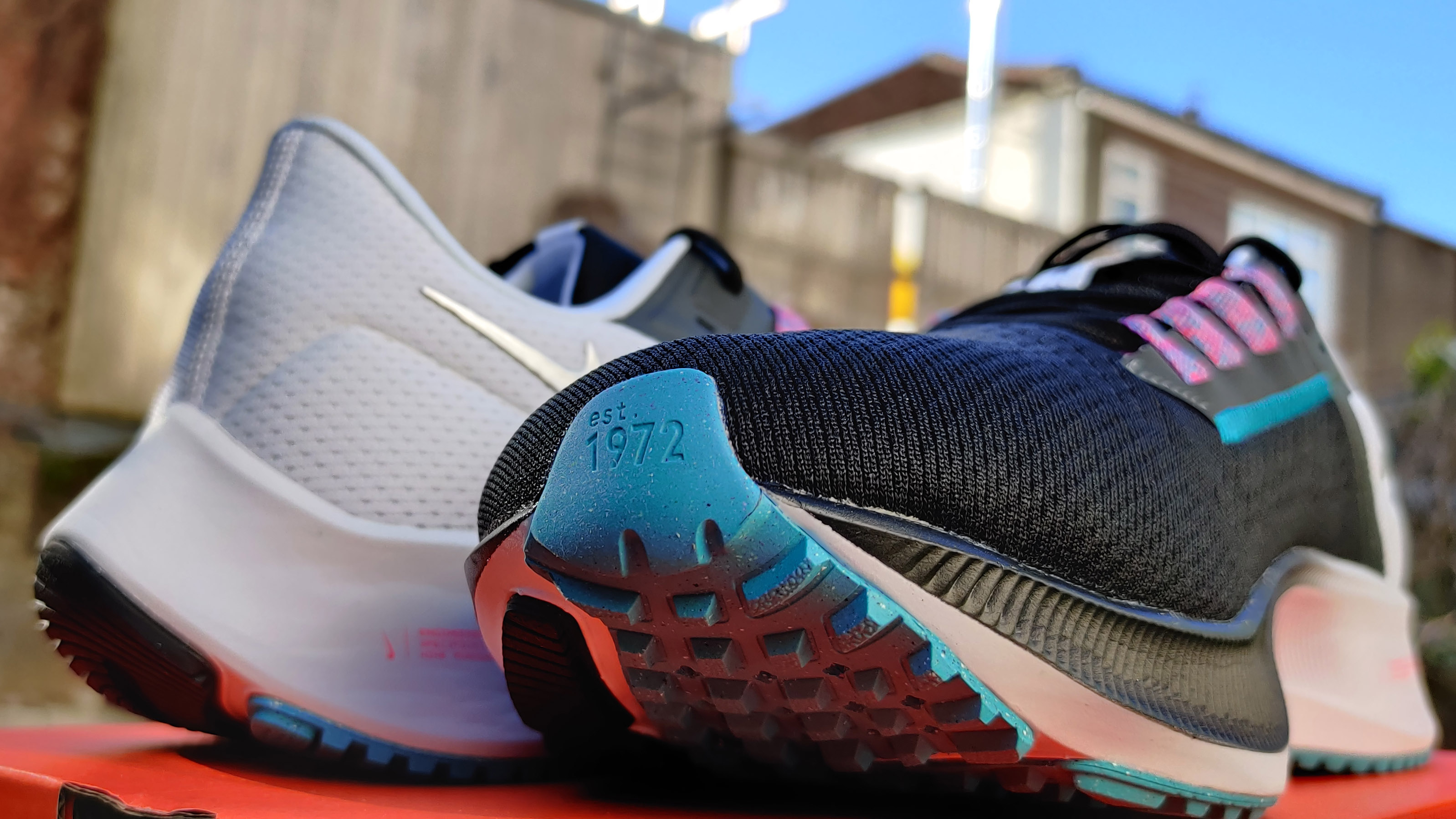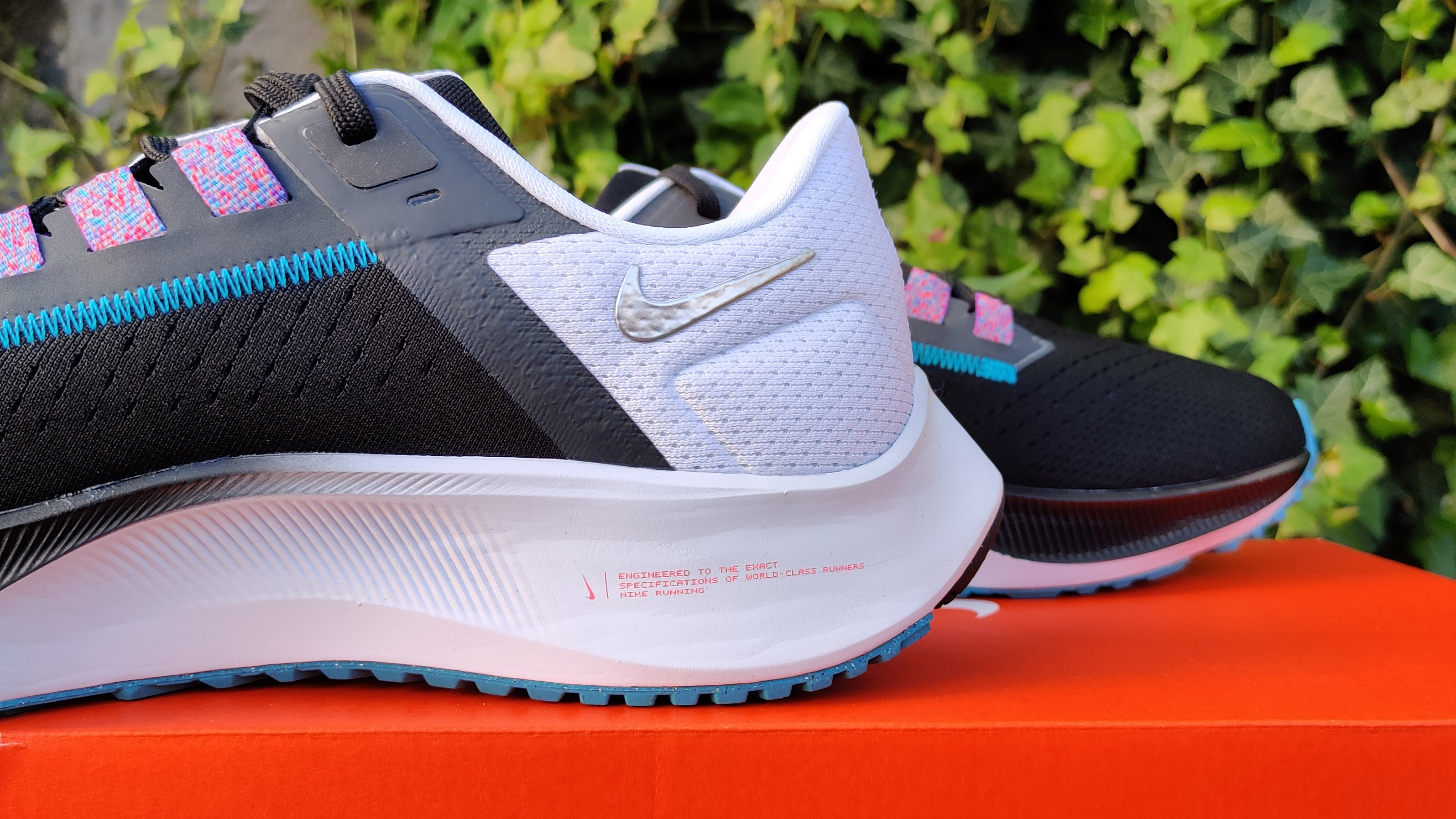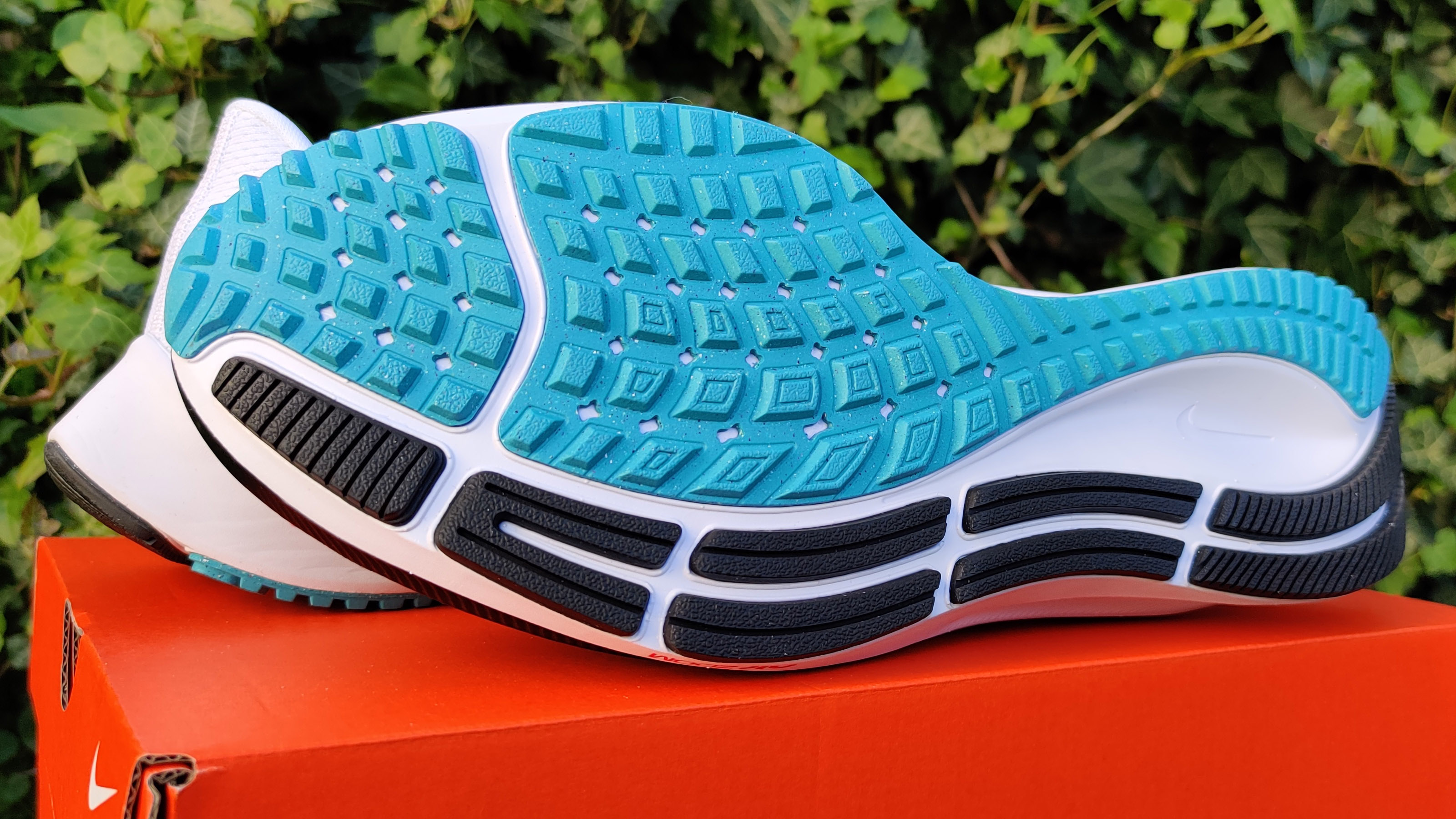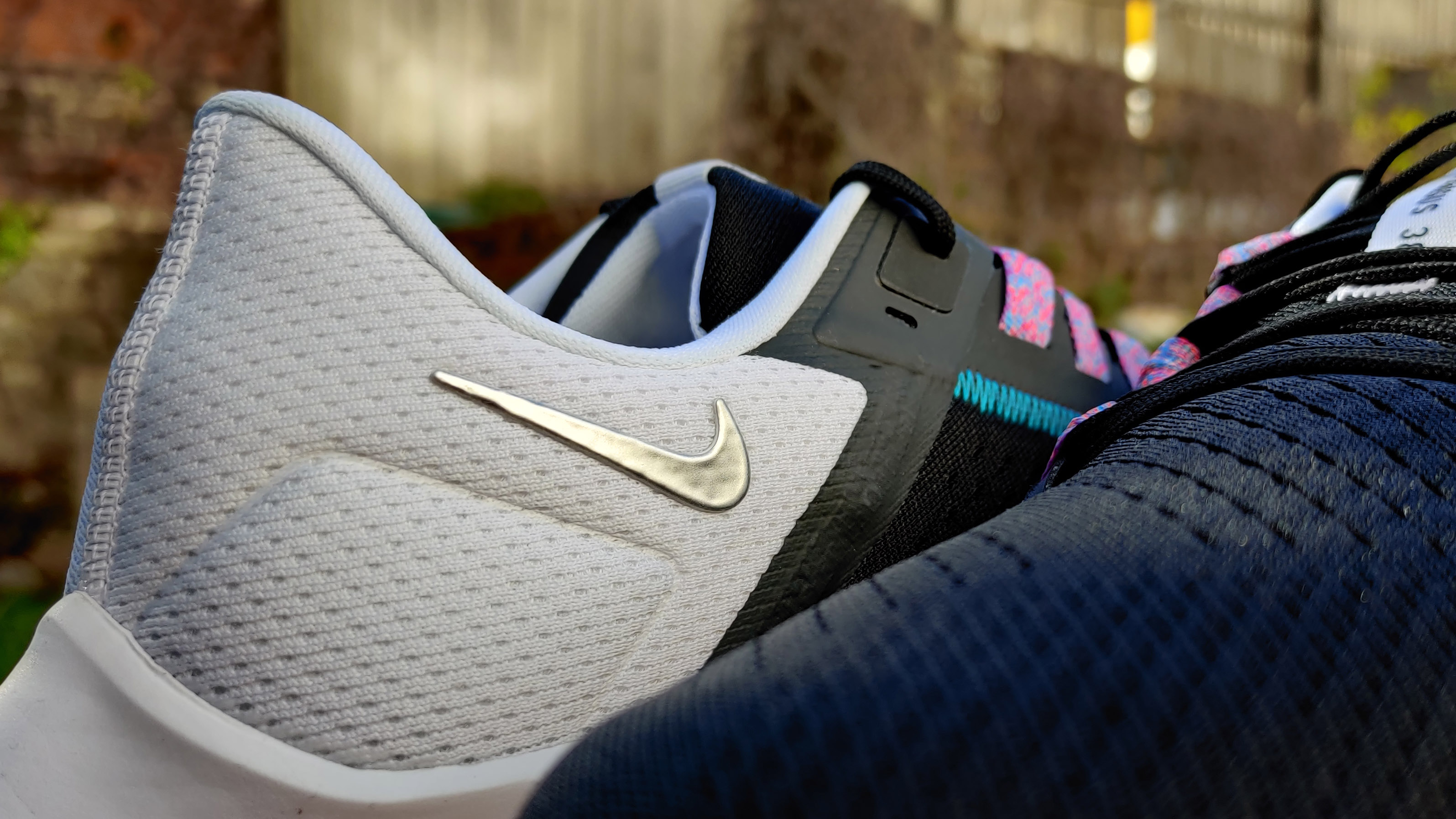Nike Air Zoom Pegasus 38 review: two steps forward, one step back
The Nike Air Zoom Pegasus 38 introduces small updates and only improves comfort, not performance, compared to the Peg 37

Considering the minor updates the shoe received, instead of calling it Nike Air Zoom Pegasus 38, it should be renamed Nike Air Zoom Pegasus 37 v2. However, the updated sandwich mesh upper is very comfortable and especially recommended for runners with wide feet.
-
+
Roomy toe box
-
+
Comfortable everyday running trainer
-
+
React foam is resilient and provides good energy returns
-
-
Not a lot of updates since the Pegasus 37
-
-
Less aesthetically pleasing than its predecessor
Why you can trust T3

Nike Air Zoom Pegasus 38 review TL;DR: Not much has changed since the Peg 37 but runners with wide feet will probably appreciate the improvements anyway.
Nike is taking iterative design seriously recently: not only the Nike Metcon 6 only brought slight improvements over the Metcon 5 last year, but now the new Peg 38 is just ever so slightly tweaked compared to its predecessor, the excellent Nike Air Zoom Pegasus 37.
Is it a problem? Not really. Is it slightly confusing for people who don’t follow running shoe design as closely as people who review them for a living? Possibly.
‘If it ain’t broke, don’t change it’, as the saying goes, and I can see why Nike is biding its time when it comes to introducing more innovation in its running and workout shoe lineups.
Admittedly, the best Nike running shoes are also the best running shoes in general. As controversial as the Nike ZoomX Vaporfly NEXT% is, almost everyone agrees they are amazing running shoes.
Taking this into account, it’s completely understandable that the latest entry in the otherwise very decent Pegasus range only received small updates. Nike seemingly mainly focused on improving comfort levels, especially for runners with wider feet. Running dynamic-wise, the Peg 37 and 38 are almost identical and the new running shoes feature most of the same technology we’ve already seen in the Peg 37. I’d recommend reading the review of the Peg 37 to find out more about those.
Nike Air Zoom Pegasus 38: price and availability
The Nike Air Zoom Pegasus 38 is available to buy now at Nike UK, Nike US and Nike AUS, as well as selected third-party retailers such as sportsshoes.com, for a recommended retail price of £104.95/$120/AU$180.
To save on your footwear, check our Nike discount codes.

Nike Air Zoom Pegasus 38: the tech
I will be referring back to the Peg 37 quite a lot here so please bear with me. The new Nike Air Zoom Pegasus 38 “has subtle updates to fit in the midfoot and brings back the forefoot Zoom Air unit from the Peg 37 for the right touch of springiness underfoot”, according to Nike. If even the manufacturer claims that the updates are small, you can rest assured they really are.
You have the forefoot Zoom Air air pockets providing propulsion and more stability, compared to the full length Zoom Air units found in previous models prior to the Peg 37. These air pockets are combined with the resilient yet soft Nike React foam which I really liked in pretty much every Nike running shoe I tried so far, including the Nike React Infinity Run.
The React foam is not quite as bouncy as the ZoomX foam found in the Vaporfly and the Nike ZoomX Invincible Run and certainly not as soft as the bubbly Nike Joyride Run Flyknit, but for training purposes over moderate distances, the React is probably the best compromise between performance and longevity.
The biggest difference between the Peg 37 and the Peg 38 is the upper which I will discuss in the next section.

Nike Air Zoom Pegasus 38: ergonomics
The upper and the general fit of the Nike Air Zoom Pegasus 38 have indeed been improved. Despite having wide feet, I kind of enjoyed running in the Peg 37, but the Pegasus 38 feels even more comfortable with its spacious toe box. Nike says “runners might notice it feels similar to models prior to the Pegasus 36.” I’ll let you be the judge of that.
There is also new midfoot webbing that in theory helps “runners lace up to a personalised fit”, but then again, lacing in general allows you to do that so I’m just not sure. Admittedly, leaving the toe box free from eyelets and concentrating them on the midfoot section make the front of the shoes more comfortable without compromising much on stability.
The upper is made of a soft and breathable sandwich mesh material and indeed, the Nike Air Zoom Pegasus 38 feels soft and breathable. The inside of the upper is soft to the touch and there is some padding around the ankle as well as added foam in the now-separate tongue but thankfully, the sandwich mesh anf the upper as a whole doesn't feel stuffy or too hot.

Nike Air Zoom Pegasus 38: aesthetics
The Nike Air Zoom Pegasus 38 might have taken two steps forward with its updated upper but it also took one step back with how this upper looks. It’s not ugly by any means but the Peg 37’s colours and design felt fresher than the Peg 38. I might even have to use the ‘b’ word here: the Nike Air Zoom Pegasus 38 looks a bit bland. Sorry, not sorry.
Where the Pegasus 37 was brilliant white and used lovely accent colours, the Pegasus 38 opted in for matte colours and a lot of black: the front and the tongue are pretty much pitch black. The eyelets do add a bit of style to the shoes as well as the light blue stitching and outsole, but overall, the Peg 38 feels less exciting than its predecessor. A shame, really, although I appreciate that it might feel different to other people. Beauty is in the eye of the beholder, as they say, so you might end up liking the design yourself.

Nike Air Zoom Pegasus 38: verdict
I’m in a bit of pickle when it comes to rating the Nike Air Zoom Pegasus 38: the Nike Pegasus line as a whole certainly deserves five stars but the Pegasus 38 in itself is more of an ‘okay’ as opposed to a ‘great’ running shoe, so I would probably give it three stars. That said, it’s impossible not to take into account the positive features the shoe inherited from its predecessors so I’ll have to meet in the middle and give it four stars.
I can’t stress enough that the Nike Air Zoom Pegasus 38 is not a bad running shoe, it’s just not as innovative as I expect new iterations to be from Nike. The situation is almost identical to when I reviewed the Nike Metcon 6: it was almost identical to the Metcon 5 but with a slightly more breathable upper. Sounds familiar?
The only people I can really recommend the Nike Air Zoom Pegasus 38 to are runners with wide feet who need a decent everyday trainer with a reliable foam that’s also not too terrible when it comes to energy return. Most people will be better off with the Peg 37 since I can only assume its price will drop now that the Pegasus 38 is available to buy.
Nike Air Zoom Pegasus 38: also consider
The UA Flow Velociti Wind will give you impressive traction, feel fast and responsive propelling you forward, and offers lots of other tech in a very lightweight shoe. This is an all-round trainer that is going to be hugely popular due to being so lightweight, giving great rebound, being innovative and easy to run in.
The Adidas Ultraboost 21 is comfortable, responsive and display all the features I expect to see in great training shoes. Better still, they look rather sexy too, albeit especially this time of the year, it will be pretty difficult to keep them box fresh for too long. the same applies to the Peg 38 too, though, so there is that.
Sign up to the T3 newsletter for smarter living straight to your inbox
Get all the latest news, reviews, deals and buying guides on gorgeous tech, home and active products from the T3 experts

Matt Kollat is a journalist and content creator who works for T3.com and its magazine counterpart as an Active Editor. His areas of expertise include wearables, drones, fitness equipment, nutrition and outdoor gear. He joined T3 in 2019. His byline appears in several publications, including Techradar and Fit&Well, and more. Matt also collaborated with other content creators (e.g. Garage Gym Reviews) and judged many awards, such as the European Specialist Sports Nutrition Alliance's ESSNawards. When he isn't working out, running or cycling, you'll find him roaming the countryside and trying out new podcasting and content creation equipment.
-
 Smeg adds a touch of navy sophistication to its iconic breakfast set
Smeg adds a touch of navy sophistication to its iconic breakfast setIt's a minimalist's dream
By Lizzie Wilmot Published
-
 My most anticipated Netflix movie of the year gets a wild new trailer
My most anticipated Netflix movie of the year gets a wild new trailerHavoc looks pretty unbelievable
By Max Freeman-Mills Published
-
 Forget the tariffs, Paddington 3 is now on Netflix to bring you joy
Forget the tariffs, Paddington 3 is now on Netflix to bring you joyPaddington In Peru is now streaming on Netflix
By Mike Lowe Published